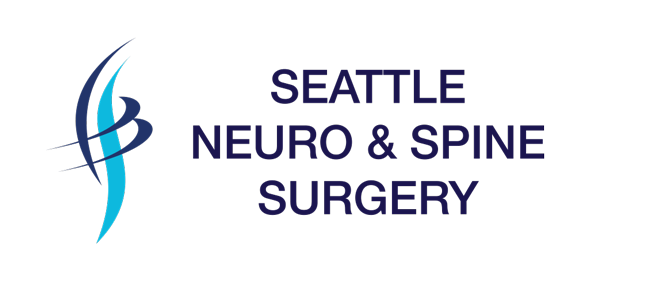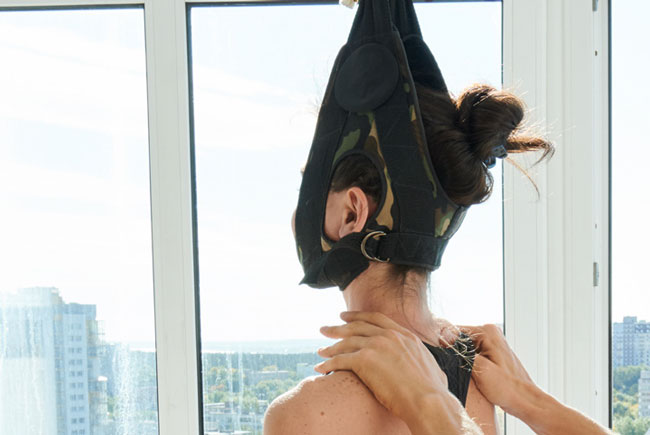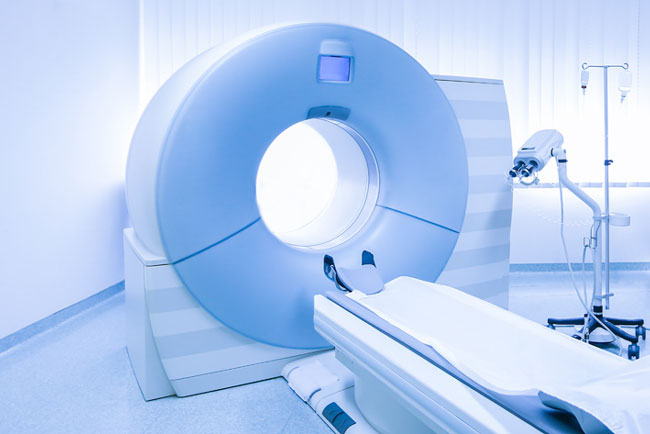
What to Do Before Seeking a Spine Surgeon
Seattle Neuro and Spine Surgery offers state-of-the-art spine surgery for back and neck pain. But if you’re coping with neck pain, you’ll be pleased to learn that it may be resolved through conservative measures. Before you book an appointment with us, we suggest you try the following treatments. Please note that this article is intended for educational purposes only and is not a substitute for medical advice.

Rest
Rest is a particularly effective treatment for neck pain if you lead an active lifestyle. Take it easy for a few days. Avoid heavy lifting and strenuous physical activity. “Pushing yourself” can do more harm than good so do your best to rest your body. Rest and a gradual increase in activities over a two- to four-week period should show improvement. If pain persists or gets worse, contact your primary care physician.

Hot and Cold Therapy
If you’ve felt pain for four weeks or less, cold therapy may be a good option at first. The cold temperature of an ice pack or frozen bag of vegetables will constrict your blood vessels and reduce swelling and inflammation. Once you notice some improvement, you can try heat therapy with a heat pack. Heat therapy may aid with muscle movement and flexibility.

Stress Management
You may find that your pain level is at its peak when you’re under the most stress. If this is the case, stress management techniques may be a good idea. To reduce your stress in a healthy manner, try meditation, breathing exercises, or yoga. Spending time outdoors and participating in hobbies may also keep your stress levels to a minimum.

Stretches and Home Exercises
Stretches and low-impact exercises at home can alleviate and prevent neck pain. They reduce tension in the muscles and improve range of motion as well as mobility. Stretches and exercises may be a part of your physical therapy routine or recommended by a doctor to perform at home.

Medications
Not only can certain medications alleviate pain, they may also reduce any inflammation you may be facing. In most cases, non-steroidal
anti-inflammatory drugs (NSAIDs) such as aspirin, ibuprofen, and naproxen will help. Other types of medications that may make sense include muscle relaxants, COX-2 inhibitors, antidepressants, and acetaminophen. Interactions between your current medications may interact with over-the-counter medication. Consult your primary physician before using additional medications.

Physical Therapy
Once they get to know your unique condition, a physical therapist can design an exercise routine to strengthen, stretch your neck, and improve your posture. In order for physical therapy to be effective, you’ll need to perform the prescribed exercises on a regular basis at home. Most physical therapists will require a prescription. Your primary care physician can prescribe this for you.

Massage Therapy/Chiropractor
Massage therapy and/or a chiropractor may offer several benefits. These techniques may relax your muscles and improve your range of motion. They may also reduce stress levels and increase endorphins so that you feel good and find it easier to manage your pain. Massage Therapy and Chiropractic care may not be for everyone; if your treatment is aggravating your care, stop treatment and consult your primary care physician. Most massage therapy and chiropractors are not covered by insurance.

Acupuncture
Acupuncture involves inserting small, thin needles into acupoints on your neck. This promotes blood circulation and energy flow to improve your pain. Acupuncture may also release endorphins and other chemicals into your muscles, brain, and spinal cord to encourage physical and emotional well-being as well as natural healing. Most acupuncture treatment is not covered by insurance.

Traction
Many over-the-counter, cervical traction devices are available locally or online, and do not require a prescription. Traction is a type of therapy that relieves pressure and can be performed manually or mechanically. Manual traction involves stretching the neck muscles a physical therapist and chiropractor’s hands while mechanical traction uses equipment like slings, ropes, and pulleys. Manual traction usually requires a prescription from your primary care physician.

MRI
Magnetic resonance imaging (MRI) is a test that can generate detailed, 3-D images of your neck. It’s often used to diagnose conditions and required before spine surgery is performed. The results of your MRI will help a doctor determine if surgery is necessary as well as what steps you need to take next. An MRI is a test that may be required if no response to several weeks of conservative treatment. MRI’s are non-invasive and non-radiation tests. Your primary care physician can help facilitate these tests, and may require pre approval from your insurance company.

Injections
If medications don’t offer pain relief, cortico-steroid injections may help. They are usually performed under local anesthesia and can provide relief that lasts anywhere from a week to a year. Depending on your condition, your doctor may recommend epidural steroid injections, facet joint injections, or nerve root block. For best results, injections should be paired with physical therapy and exercise. All injections require a referral to a pain management specialist or interventional specialist, and usually require an MRI. Please contact your primary care physician for a referral.

If you’ve undergone conservative care and physical therapy, with little change
in your condition, please ask your primary care physician for a referral to our offices.



